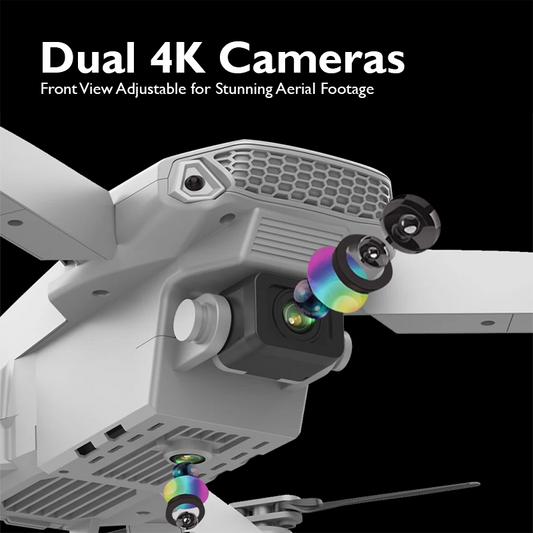Drones in Geology: Surveying Geological Features

In the dynamic realm of geology, where the Earth's secrets are waiting to be unveiled, technological advancements have played a pivotal role in revolutionizing traditional surveying methods. Drones, also known as Unmanned Aerial Vehicles (UAVs), have emerged as a game-changer in the field of geology, providing researchers and professionals with a powerful tool to survey and study geological features with unprecedented precision and efficiency.
Understanding the Role of Drones in Geology:

Geologists are tasked with exploring and analyzing the Earth's diverse landscapes, from towering mountains to expansive valleys. Traditionally, ground-based surveys and satellite imagery were the primary methods for studying geological features. However, these methods often presented limitations, such as restricted accessibility and a lack of detailed imagery.
Enter drones, equipped with cutting-edge technology that allows geologists to overcome these limitations. UAVs provide a unique vantage point, capturing high-resolution images and collecting valuable data that was once challenging to obtain. The use of drones in geology has rapidly gained popularity due to their ability to survey vast areas efficiently, offering a comprehensive perspective on geological formations.
Benefits of Using Drones in Geology:

1.Enhanced Accessibility:
Drones can access remote and challenging terrains that are difficult or dangerous for geologists to reach. This newfound accessibility enables the study of previously inaccessible geological formations, contributing to a more comprehensive understanding of Earth's diverse landscapes.
2.Cost-Effective Surveying:
Traditional surveying methods often come with high costs, especially for large-scale projects. Drones offer a cost-effective alternative, reducing expenses associated with manpower and equipment. The efficiency and speed of drone surveys contribute to significant cost savings without compromising the quality of data collected.
3.High-Resolution Imaging:
Equipped with advanced cameras and sensors, drones capture high-resolution images and collect detailed data on geological features. This level of precision allows geologists to analyze rock formations, fault lines, and other geological structures with unparalleled clarity, leading to more accurate research outcomes.
4.Rapid Data Collection:
Time is often a crucial factor in geological research. Drones facilitate rapid data collection, covering large areas in a short amount of time. This efficiency is particularly beneficial for time-sensitive projects or when monitoring geological changes over a specific period.
5.Environmental Monitoring:
Drones play a vital role in monitoring environmental changes in geological landscapes. Whether it's tracking erosion, studying volcanic activity, or assessing the impact of climate change, UAVs provide real-time data that aids in proactive decision-making and conservation efforts.
Applications of Drones in Geological Surveys:
1.Topographic Mapping:

Drones excel in creating highly accurate topographic maps of geological features. By flying over an area and capturing images from various angles, UAVs generate detailed 3D models that assist geologists in mapping the terrain with precision.
2.Fault Line Analysis:
Studying fault lines is crucial for understanding seismic activity. Drones equipped with specialized sensors can analyze fault lines and collect data that helps geologists assess the risk of earthquakes in a particular region.
3.Mineral Exploration:

Drones contribute to mineral exploration by surveying vast areas and identifying potential deposits. The ability to cover large expanses efficiently is invaluable in locating and mapping mineral resources.
4.Volcano Monitoring:

Monitoring volcanic activity is a hazardous task. Drones provide a safer alternative by capturing high-resolution images and data from a distance, allowing geologists to monitor volcanic behavior and anticipate potential eruptions.
5.Geomorphological Studies:

Geomorphology, the study of Earth's landforms and their evolution, benefits from drone technology. UAVs assist in capturing detailed images of landscapes, aiding geologists in understanding the processes that shape the Earth's surface.
Drones have undeniably transformed the field of geology, offering researchers and professionals a powerful tool for surveying and studying geological features. The enhanced accessibility, cost-effectiveness, high-resolution imaging, rapid data collection, and diverse applications make drones an indispensable asset in the geologist's toolkit. As technology continues to advance, the integration of drones into geological surveys will likely become even more prevalent, unlocking new possibilities for understanding the Earth's complex and dynamic geology. Embracing this technology ensures that geologists can continue to push the boundaries of exploration, uncovering the secrets hidden within our planet's diverse landscapes.
Explore a variety of drones at our online drone store.Happy Flying!











